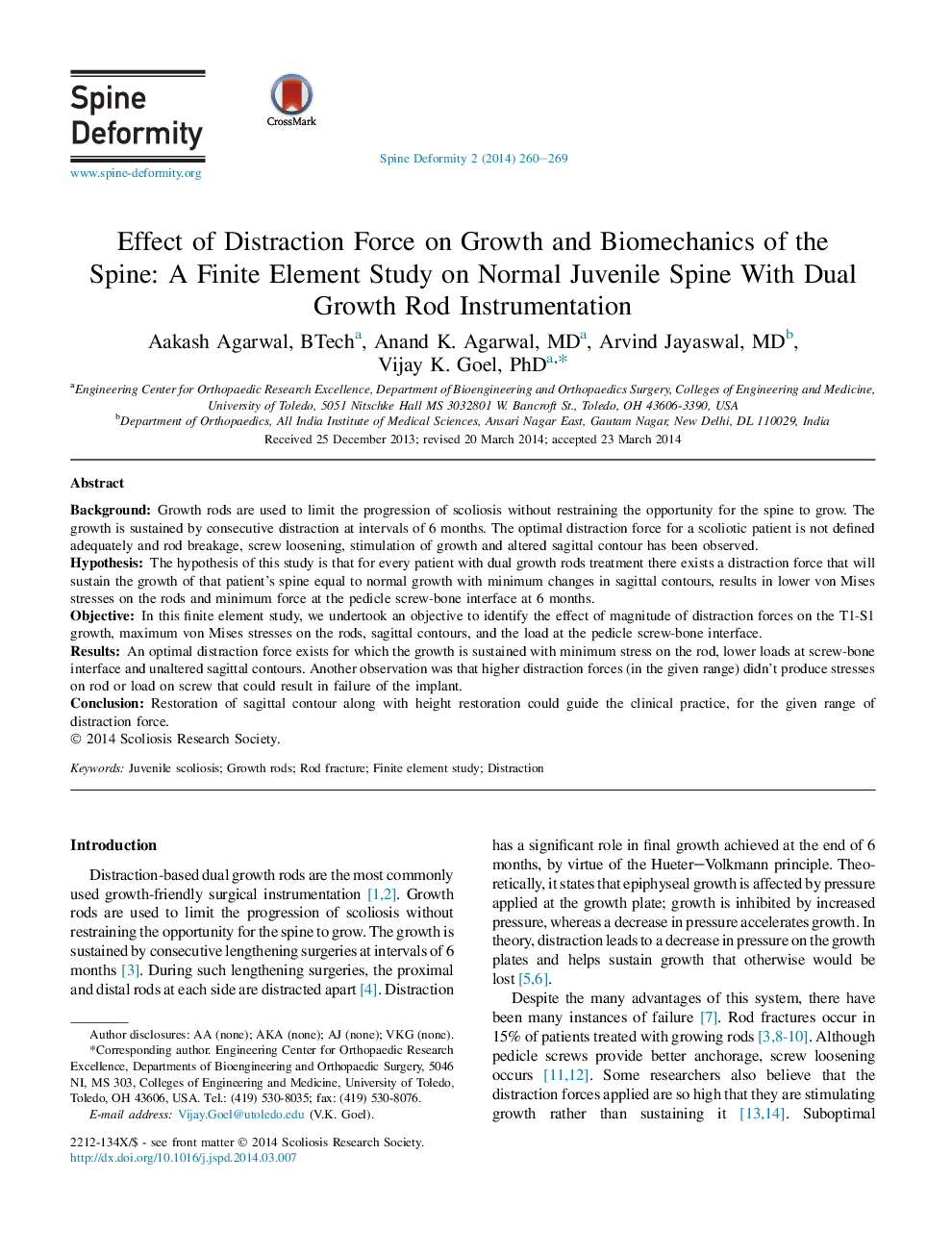| Article ID | Journal | Published Year | Pages | File Type |
|---|---|---|---|---|
| 4095441 | Spine Deformity | 2014 | 10 Pages |
BackgroundGrowth rods are used to limit the progression of scoliosis without restraining the opportunity for the spine to grow. The growth is sustained by consecutive distraction at intervals of 6 months. The optimal distraction force for a scoliotic patient is not defined adequately and rod breakage, screw loosening, stimulation of growth and altered sagittal contour has been observed.HypothesisThe hypothesis of this study is that for every patient with dual growth rods treatment there exists a distraction force that will sustain the growth of that patient’s spine equal to normal growth with minimum changes in sagittal contours, results in lower von Mises stresses on the rods and minimum force at the pedicle screw-bone interface at 6 months.ObjectiveIn this finite element study, we undertook an objective to identify the effect of magnitude of distraction forces on the T1-S1 growth, maximum von Mises stresses on the rods, sagittal contours, and the load at the pedicle screw-bone interface.ResultsAn optimal distraction force exists for which the growth is sustained with minimum stress on the rod, lower loads at screw-bone interface and unaltered sagittal contours. Another observation was that higher distraction forces (in the given range) didn’t produce stresses on rod or load on screw that could result in failure of the implant.ConclusionRestoration of sagittal contour along with height restoration could guide the clinical practice, for the given range of distraction force.
